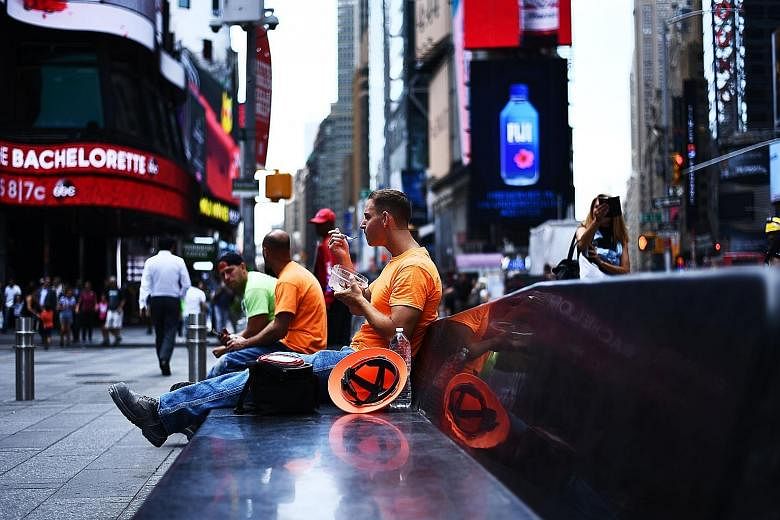WASHINGTON • The United States economy accelerated in the second quarter as consumers ramped up spending and businesses invested more on equipment, confirming that the sluggish performance early in the year was temporary.
Gross domestic product increased at a 2.6 per cent annual rate in the April-June period, which included a boost from trade, the Commerce Department said in its advance estimate yesterday.
Still, this was slightly below economists' expectations for 2.7 per cent growth, while the first quarter's tepid performance was revised down to 1.2 per cent from 1.4 per cent previously, in part because of a bigger drag from inventories and weaker business investment
The US dollar weakened after the report. US stock futures followed equities from Sydney to Paris lower after a sell-off in technology shares amid heightened concerns about corporate earnings.
The economy grew 1.9 per cent in the first half of this year, near the 2.2 per cent average expansion pace through the end of last year. But it is unlikely GDP will top 2.5 per cent for the full year. US President Donald Trump has set an ambitious 3 per cent growth target for this year.
While the Trump administration has vowed to cut corporate and individual taxes as part of its business-friendly agenda, Republicans' struggles in Congress to pass a healthcare restructuring have left analysts sceptical on the prospects of fiscal stimulus.
So far, the impasse in Washington has not hurt either business or consumer confidence.
The rebound in growth, together with a tightening labour market, likely leaves the Federal Reserve on course to announce a plan to start reducing its US$4.2 trillion (S$5.7 trillion) portfolio of Treasury bonds and mortgage-backed securities in September, as well as raise interest rates for a third time this year.
The US central bank left rates unchanged on Wednesday and said it expected to start winding down its portfolio "relatively soon".
A resurgence in consumer spending accounted for most of the pick-up in the second quarter, helped by a steady job market and household finances boosted by stock and home-equity gains.
Consumer spending, which makes up over two-thirds of the US economy, grew at a 2.8 per cent rate, accelerating from 1.9 per cent in the first quarter.
But with wage growth remaining sluggish despite the labour market being near full employment, there are concerns that consumer spending could slow in the third quarter. Annual wage growth has struggled to break above 2.5 per cent.
Business investment in equipment rose at an 8.2 per cent pace, the most in almost two years, signalling firms are optimistic about demand in the US as well as in overseas markets.
REUTERS, BLOOMBERG

